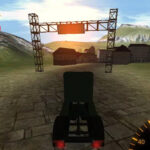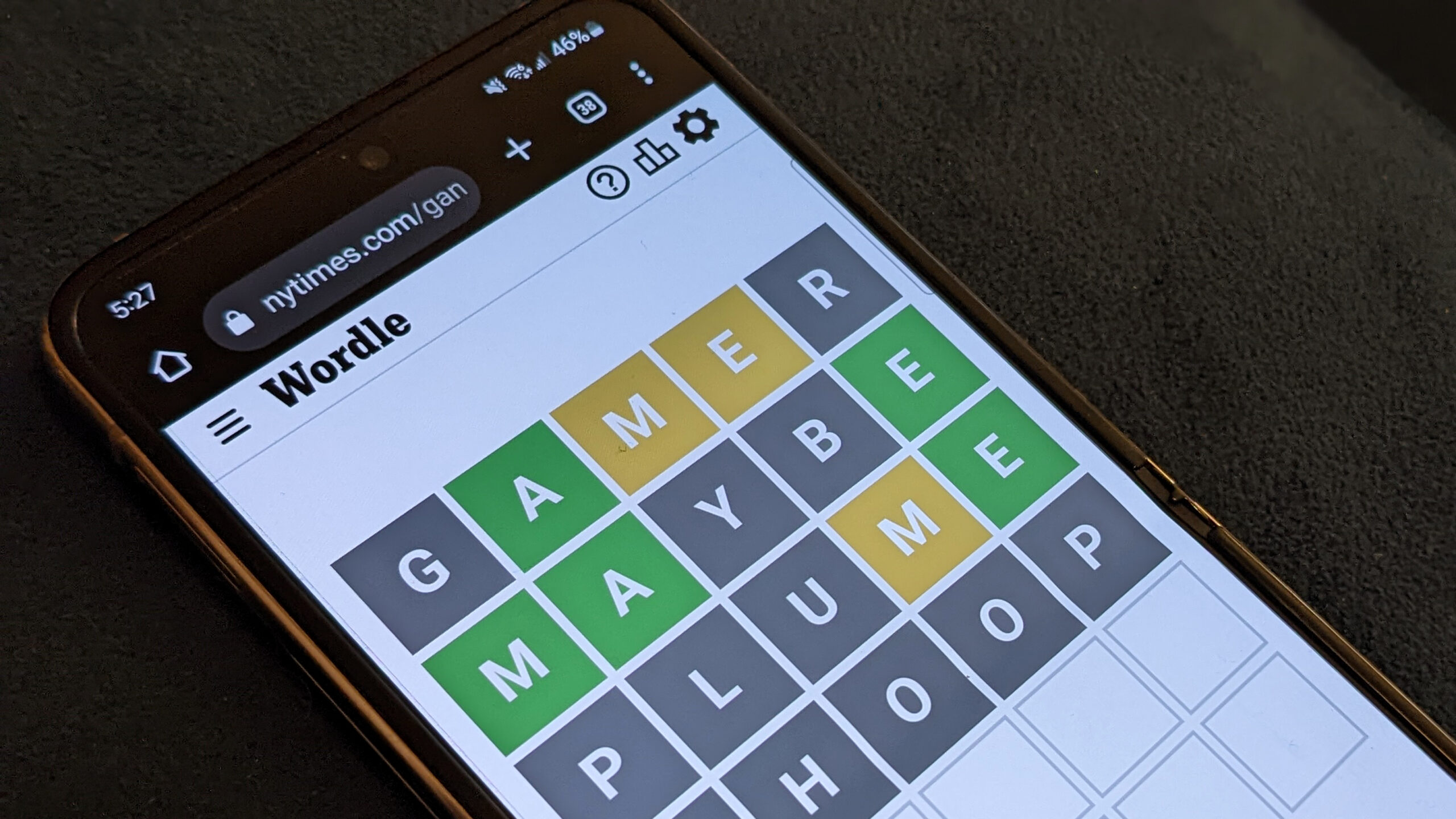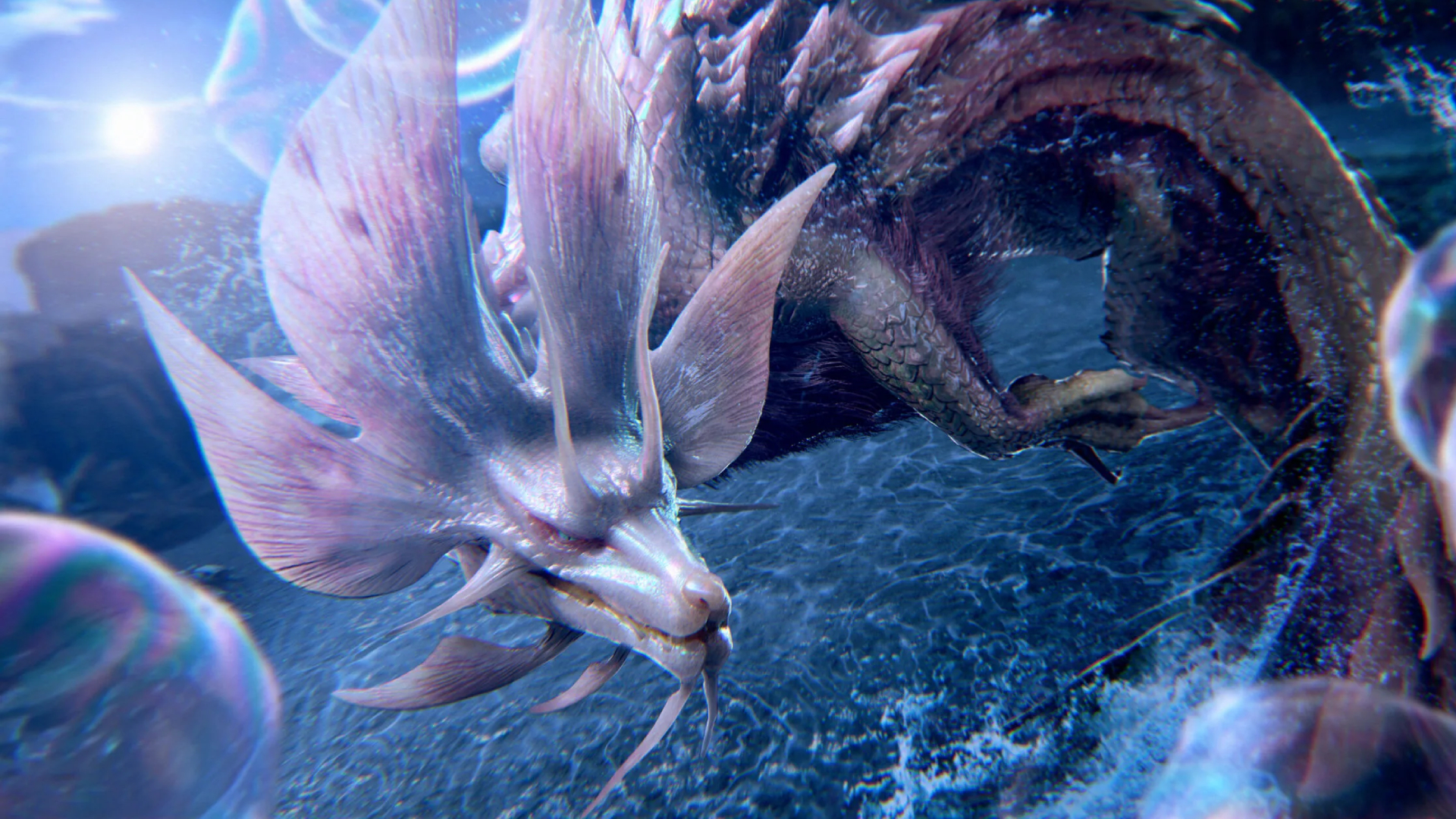What is it? A surreal survival horror sequel that also ties into Control and Remedy’s other past games.
Release date 27 October 2023
Expect to pay $50/£40
Developer Remedy Entertainment
Publisher Epic Games Publishing
Reviewed on Nvidia Geforce RTX 3080, AMD Ryzen 9 5900X, 32GB RAM
Steam Deck Unsupported
Link Official site
In the first playable moments of Alan Wake 2, you control a naked, balding, middle-aged man stumbling in confusion around a forest. After a few seconds of staring at his hairy bottom while I guided him around, it dawned on me that this wasn’t going to be your typical big budget videogame.
Even by Remedy’s own quirky standards, Alan Wake 2 is idiosyncratic. You could call it self-indulgent, even, as it dives headfirst into its every strange idea. Weaving a winkingly meta journey through all corners of the studio’s lore, at times it feels like watching Remedy get high off its own fumes.
Which is exactly what makes it so enthrallingly brilliant.
The game picks up 13 years after writer Alan Wake’s disappearance at the end of the first game, following both his continuing attempts to escape the mysterious Dark Place—a dimension of psychological nightmare—and the investigations of new protagonist Saga Anderson, an FBI agent sent to the sleepy town of Bright Falls to find the culprits behind a series of ritual murders. You play as both characters, each following their own story threads that parallel and interweave with each other, and you can switch between them at set points, allowing you to experience the two journeys in your own unique order.
Though the story continues almost uninterrupted from the first game, tonally things feel very different in Bright Falls. Alan Wake was the sort of game I’d call spooky rather than scary; Alan Wake 2 is proper survival horror, full of brutal encounters, nail-bitingly tense delves into darkness, and surprisingly gory violence. For both Saga in the real world and Alan in the Dark Place, staying alive means managing your ammo and resources, and carefully deploying sources of light to keep the monstrous Taken at bay and burn away their shadowy defences.
Light entertainment
(Image credit: Remedy Entertainment)
Remedy’s last game Control was a chaotic power fantasy, every fight a maelstrom of gunfire, superpowers, and any physics objects that dared to exist in your vicinity. By contrast, Alan Wake 2 is a game of tension and release; long stretches of quiet, building fear, punctuated by short bursts of violence and panic. Brilliantly impactful, satisfying gunplay helps that structure sing—when you hit a Taken’s weak spot, you really know about it, as the booming shot rings out, smoky shadows blast out of the wound, and the creature recoils back. That is, until it shrugs off having half its torso blasted away and starts advancing on you again.
The first game had a very specific and satisfying rhythm—dodge-torch-shoot-repeat. Alan Wake 2 technically has all the same mechanics in place, but they don’t quite link together so smoothly, preventing the kind of flow state that was possible in its predecessor. The focus is instead on keeping you on edge, and making you work for your moments of respite. For me, the most frightening enemy in the game ended up being the wolves that lurk in the forest outside Bright Falls. They’re not even that monstrous, and they don’t take that much to put down, but the way they stalk you—circling you in the undergrowth, looking for an opening to leap at you, before retreating back out of sight until their next opportunity—leads to wonderfully memorable games of cat-and-mouse.
(Image credit: Remedy Entertainment)
Remedy knows action—they’ve been making creative, satisfying combat systems since 2001’s Max Payne.
Remedy knows action—they’ve been making creative, satisfying combat systems since 2001’s Max Payne. What does show through sometimes, however, is that they’re not as experienced with the broader experience of survival horror. The long periods of quiet before a fight breaks out build atmosphere and tension wonderfully, but they give you a lot of opportunity to scavenge, allowing you to get too well-equipped and leading to too much time spent messing about with your limited inventory space when you’d rather be confronting incomprehensible horrors.
When enemies do arrive, the game often struggles to deploy them in an interesting way—encounters are always exciting, but they can feel quite unceremoniously dropped in your path to ensure you have something to do, oddly disconnected from the world around them. Non-boss enemies aren’t really introduced or built up, or given a strong connection to the environment—outside of one very disturbing late-game creature, they’re mostly just the same possessed civilians as in the first game, and they can feel a little undercooked compared to the menagerie of horrors in for example the recent Resident Evil games. Even Control’s Alan Wake-themed DLC had a more grotesque and visually exciting take on what the Dark Presence might transform someone into.
Shadow play
(Image credit: Remedy Entertainment)
But even if the survival horror elements don’t always feel fully complete, that’s much less of an issue than you might think, because really the action is only one part of what’s on offer here. What Remedy is more preoccupied with in Alan Wake 2 is its storytelling, and it’s one of the most fascinating, strange, and creatively told narratives I’ve ever experienced in a videogame.
As in the first game, the horror and madness descending on Bright Falls is driven by an evil force that piggybacks on art and fiction, distorting reality into whatever fits the narrative it’s following. It’s a wonderful excuse for the game to get absurdly meta, blurring the lines between the story the game is telling you, the story Alan has written, and references to our own world and Remedy’s past games. What’s the real backstory of Saga and the other new characters, and what has been altered to make them better players in a horror story? Did real events inspire the fiction, or did the fiction retroactively create the real events? Are these real people at all, or completely fictional constructs?
It can certainly be overwrought and convoluted, but there’s a kind of infectious enthusiasm to Remedy’s house style, and it’s more evident than ever here. The game is simply bursting with ideas, and it wants to show you every single one, all mashed together into one gloriously absorbing tangle. This is a game where the real life creative director, Sam Lake, provides the face for a character called Alex Casey, who’s an FBI agent in the real world but also an incarnation of Max Payne, and a character from a book written by Alan Wake and a movie based on that book, in which he’s played by the real Sam Lake who’s appearing on a talk show to talk about the role, while Alan both writes and experiences an Alex Casey murder mystery that may have also happened to the actual Alex Casey. And that’s just scratching the surface.
(Image credit: Remedy Entertainment)
I did not expect one of the game’s most fascinating and disturbing little mysteries to kick off with a local radio host announcing his show’s beef jerky sponsorship.
What keeps it all on the right side of fun rather than pretentious is how willing Remedy is to punctuate its big ideas with a laugh. Alan Wake 2 is frightening and in its serious moments atmospheric and dramatic, but it’s also the funniest game I’ve played this year. It’s brilliantly good at finding the humour both in over-the-top absurdity—such as a musical sequence that has to be seen to be believed—and in the quiet and very personal oddities of a small town community. At its best, it weaves horror, and comedy directly together—I did not expect one of the game’s most fascinating and disturbing little mysteries to kick off with a local radio host announcing his show’s beef jerky sponsorship (“flavours include hickory smoked, teriyaki, and hickory smoked teriyaki”).
It’s hugely enhanced as well by the many creative techniques the game uses to tell its story. Far from just sitting you down and making you watch cutscenes, it’s constantly experimenting with new ways to draw you in. Brilliantly odd live action sequences are interspersed throughout, often elegantly incorporated into in-engine sequences. Saga’s detective work involves creating your own investigation corkboards, pinning story elements and clues you discover into connected webs of fact and speculation that help you join the dots between seemingly disparate events. Radio excerpts, public access TV commercials, photographs, original songs, pages of Alan’s manuscript and more add colour and detail—at one point you can even settle down in a haunted cinema and watch a full horror short film in Finnish. You’re simply barraged with cool stuff to watch, listen to, and interact with, all of it part of one big, weird tapestry.
Even the ability to switch between the two characters becomes a major part of how you experience the story. At first I dismissed this option as a gimmick, but the further you get into each character’s journey, the more you find fascinating connections between them that make the mechanic’s purpose more clear. The game’s favourite bits of symbolism—loops, doppelgangers, darkness and light—are ever-present in both, but as you find more specific parallels you experience your own personal order of reveals and twists.
Finnish line
(Image credit: Remedy Entertainment)
It ran perfectly smoothly on my relatively beefy PC (RTX 3080, Ryzen 9 5900X, 32GB RAM), but only with a mix of medium and high graphics settings.
It certainly doesn’t hurt that all of this is presented with such visual craft and flair. Its use of light and shadow isn’t quite as striking as the first game’s was back in 2010, but it’s a proper 2023 technical powerhouse. The fantastically detailed graphics are impressive throughout—particularly the animation of the characters, whose appearances are so realistic, and their movements and facial expressions so believable, that the game is able to blend in-engine interactions with live action sequences near-seamlessly. The recommended specs are definitely intimidating as a result, however—it ran perfectly smoothly on my relatively beefy PC (RTX 3080, Ryzen 9 5900X, 32GB RAM), but only with a mix of medium and high graphics settings, with ray-tracing turned off and AI upscaling helping out on the resolution side. I do have to wonder how many players actually exist who’ll have the hardware to experience these visuals at their very best.
Past the visual spectacle of it all, it’s not always easy to hold on to the thread of what’s actually happening in Alan Wake 2 and where the story is going. Inevitably a tale told half in a reality being twisted into fiction, and half in a psychological nightmare realm, doesn’t quite follow your typical A-to-B-to-C plot structure, and the way it draws on elements of not just the first game and its spin-off, but also Control, Max Payne, and even to a small degree Quantum Break, will make it hard for anyone not au fait with Remedy’s back catalogue to keep up. A lot of the time you’re better off going with the flow than too deeply trying to dissect the literal order of events—though there’s certainly plenty to pick apart and to look for in a second playthrough, it works as much as a roller coaster ride of imagination as it does a horror thriller.
(Image credit: Remedy Entertainment)
Where Control prodded at the idea of a shared Remedy universe, Alan Wake 2 revels in it, and in some ways it feels like the start of something bigger. All that extra lore is used to add wonderful new depth and texture to the Alan Wake mythology—the cold and bureaucratic approach to the supernatural that the Federal Bureau of Control brings in particularly helps to ground the events at Bright Falls in some kind of wider reality. And in this confluence of all of their games, it feels like Remedy’s personality shines through brighter than ever. I was struck particularly by how unapologetically Nordic the game is. Remedy is based in Finland, and though that’s always influenced the stories it tells, before now its American inspirations have been at the forefront. Alan Wake 2 may still be set in Washington, but this time it’s as much a game about Finnish culture and Norse mythology as it is a tribute to Twin Peaks and Stephen King.
That feels like a symptom of a Remedy that’s more confident and more independent than ever, and that’s something that colours the entire experience of Alan Wake 2. This is a studio with a truly unique perspective, indulging in all of its wildest ideas and grandest ambitions, and though you couldn’t call it focused or restrained, it’s a glorious sprawl of surreal horror to explore. It’s rare that a game of this scope is allowed to be so completely itself, and the result is an experience that will stay with you long after you’ve seen every terrifying encounter, cheesy manuscript page, and quirky local TV commercial it has to offer.











